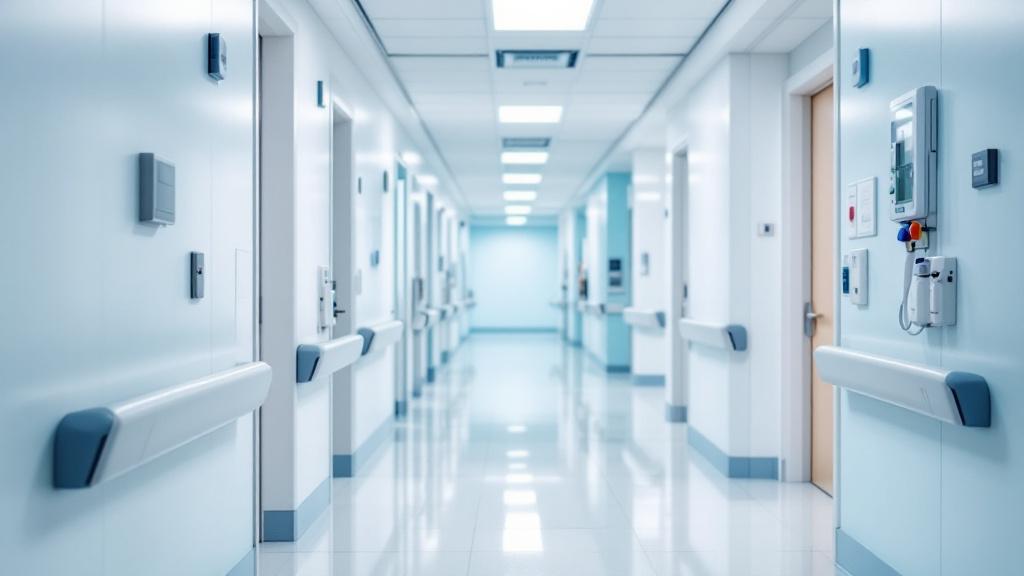Technology Advancements in Nursing Home Care
Explore technology advancements in nursing home care, enhancing resident lives with innovative solutions.
.jpg)

Advancements in Nursing Home Care
The landscape of nursing home care has transformed significantly over the years, largely due to technological innovations. These advancements have aimed to enhance the quality of life for residents while also improving the efficiency of care provided.
Evolution of Technology in Nursing Home Care
Historically, nursing homes relied heavily on standard care practices and manual documentation. However, the introduction of various technologies has reshaped how care is delivered and managed. Nurse call systems, automated medication dispensers, and digital documentation have become essential tools within the industry.
Impact of Technology on Resident Care
The integration of technology in nursing homes has led to improved resident care in various ways. It has facilitated better communication, streamlined care processes, and enhanced monitoring of residents’ health.
Benefits of Technology on Resident Care
- Improved Communication: Technology enables faster responses to residents' needs through systems that alert staff efficiently.
- Enhanced Monitoring: Systems such as wearables and remote monitoring tools allow for continuous observation of vital signs, leading to prompt interventions when necessary.
- Personalized Care Plans: Data analytics can aid in creating tailored care approaches based on individual resident needs and health conditions.
The advancements in technology have significantly contributed to a more effective and compassionate approach to nursing home care, ensuring residents receive the support required to maintain their quality of life.
Remote Monitoring Systems

Remote monitoring systems are transforming the way nursing homes provide care. They utilize advanced technology to track the health and well-being of residents in real time. This innovation allows caregivers to monitor vital signs, activity levels, and other important health metrics without being physically present.
How Remote Monitoring Systems Work
Remote monitoring systems employ various devices and technologies that collect data from residents. These systems can include wearable sensors, cameras, and smart home devices. The information gathered is transmitted to healthcare providers who analyze it to ensure that residents receive appropriate care.
Key Components of Remote Monitoring Systems
These components work together to provide a comprehensive overview of a resident's health status. Nurses and caregivers can receive alerts if there are any significant changes in the monitored data, enabling quick responses to potential emergencies.
Benefits of Remote Monitoring in Nursing Homes
The adoption of remote monitoring technology offers several advantages for nursing home care. These benefits can enhance the quality of life for residents while optimizing care processes.
Remote monitoring systems not only improve the safety and health outcomes for residents but also increase efficiency in nursing home operations. By harnessing the power of technology, these systems create a more responsive and personalized care environment.
Electronic Health Records (EHR)

The implementation of Electronic Health Records (EHR) has transformed the way patient information is documented and managed in nursing homes. This advancement is a key component of improving healthcare delivery and efficiency.
Transition to Electronic Health Records
The shift from traditional paper-based records to electronic systems has been significant in nursing home care. Many facilities have adopted EHR systems to facilitate comprehensive and convenient record-keeping. This transition includes digitizing patient records, allowing for easier access and sharing of information among healthcare providers.
The table above illustrates the increasing adoption of EHR in nursing homes over the past decade. As more facilities recognize the benefits, the trend toward electronic documentation continues to rise.
Improving Efficiency and Accuracy with EHR
The use of Electronic Health Records enhances both the efficiency and accuracy of resident care. EHR systems allow for quick retrieval of patient histories, treatment plans, and medication lists, which can significantly reduce time spent on paperwork.
Moreover, EHRs contribute to higher accuracy levels by minimizing the risk of errors associated with handwritten records. The systems often include automated prompts and alerts, reducing the likelihood of administering incorrect medications or treatments.
The table above highlights the key benefits of Electronic Health Records in nursing home care. Through improved efficiency and accuracy, EHRs support a more effective healthcare delivery model for residents.
Assistive Devices and Robotics
Technology advancements in nursing home care include the development of various assistive devices and the integration of robotics. These innovations enhance the quality of life for residents and support staff in providing better care.
Assistive Devices for Daily Living
Assistive devices play a crucial role in helping residents maintain independence in their daily activities. These devices are designed to aid with mobility, communication, and personal care.
Some common types of assistive devices include:
These devices not only promote independence but also improve safety by reducing the risk of falls and other injuries.
Integration of Robotics in Nursing Homes
The integration of robotics in nursing homes represents a significant advancement in care technology. Robots are used to assist staff and interact with residents, contributing to both efficiency and comfort.
Types of robotic innovations include:
Robotics can enhance staff productivity by performing routine tasks, thus allowing caregivers to dedicate more time to personal interactions with residents. The result is an environment that prioritizes both efficiency and compassionate care, further highlighting the impact of technology advancements in nursing home operations.
Telehealth Services
Telehealth services have transformed the landscape of healthcare delivery in nursing homes. These technology advancements allow for seamless access to medical care without the need for physical visits, greatly benefitting residents.
Accessing Healthcare Remotely
Telehealth facilitates remote consultations between healthcare providers and residents. Through video calls, nurses and doctors can assess patient conditions, provide medical advice, and even make diagnoses without needing to be in the same location. This is particularly advantageous for residents with mobility challenges or those in need of specialized care.
Enhancing Healthcare Delivery through Telehealth
The introduction of telehealth services in nursing homes enhances overall healthcare delivery. These services decrease the need for transportation, reduce wait times, and encourage timely medical interventions. By leveraging technology, healthcare staff can monitor patients more efficiently and respond to health issues as they arise, ensuring better outcomes.
Telehealth services embody a significant advancement in nursing home care. The ability to access healthcare professionals remotely fosters a healthier living environment for residents and ensures continuity of care.
Future Trends in Nursing Home Care Technology
The landscape of nursing home care is evolving rapidly due to technological advancements. Future trends are focusing on enhancing resident care, operational efficiency, and overall outcomes through innovative solutions.
Predictive Analytics and Artificial Intelligence
Predictive analytics and artificial intelligence (AI) are set to revolutionize nursing home operations. These technologies can analyze vast amounts of data to forecast potential health issues before they become critical. By identifying patterns in resident health metrics, nursing staff can intervene earlier, improving outcomes and ensuring better care.
Personalized Care Solutions
Personalized care solutions use technology to cater to the unique needs of each resident. This approach shifts from a one-size-fits-all model to customized care plans that take into account individual preferences, medical histories, and lifestyle choices.
By leveraging predictive analytics and personalized care solutions, nursing homes can enhance the quality of care provided to residents. The integration of these technologies represents the next step in improving nursing home services and addressing the complex needs of an aging population.
Sources
https://vnahg.org/technology-in-home-healthcare-advancements-and-benefits

How to Plan for Long-Term Home Care Services

How Home Team Helps Families Make Informed Care Decisions

How Home Team's Caregivers Provide Peace of Mind for Families



